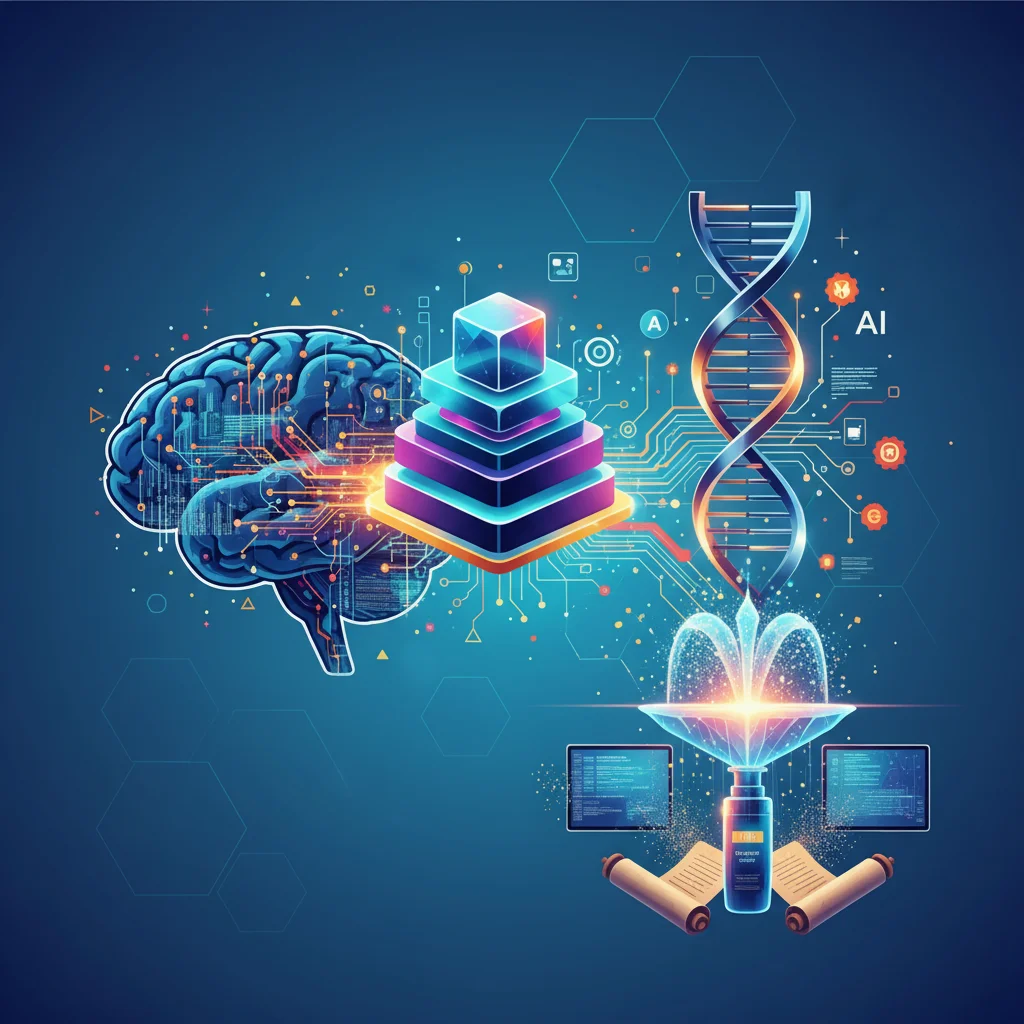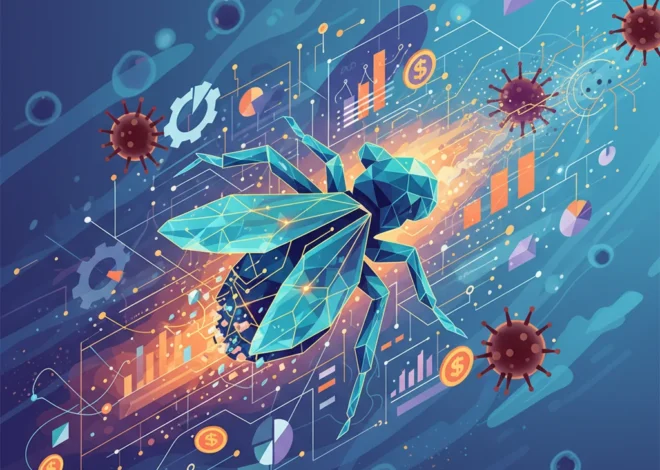
The Ultimate SaaS: How AI and Code Are Powering the Multi-Billion Dollar Quest to End Aging
For centuries, the dream of extending human life was the stuff of myths and legends—the Fountain of Youth, the Philosopher’s Stone. Then, it became the domain of late-night infomercials selling “anti-aging” creams. Today, that’s all changing. The quest for a longer, healthier life has exited the fringe and entered the boardroom. It’s no longer about anti-aging; it’s about longevity, and it’s rapidly becoming one of the most exciting and well-funded sectors in the tech industry.
Forget what you think you know. This isn’t about cosmetic fixes. This is a fundamental engineering problem being tackled by the same minds and money that built our digital world. Tech billionaires, brilliant scientists, and ambitious startups are pouring billions into a single, audacious goal: to treat aging itself as a disease. A disease that can be managed, slowed, and perhaps one day, even reversed. And their primary tools aren’t scalpels and pills—they’re artificial intelligence, massive datasets, and biological programming.
This isn’t just a revolution in medicine; it’s a revolution in how we think about the human body. We’re moving from reactive healthcare to proactive biological maintenance, and the implications for technology, society, and the very definition of life are staggering.
From Snake Oil to Silicon: The New Longevity Paradigm
The biggest shift in this movement is a rebranding of the core concept. The term “anti-aging” has been jettisoned for its association with vanity and unproven claims. The new focus is on “healthspan”—the number of years we live in good health, free from chronic disease. The goal isn’t necessarily to live to 150, but to make it to 90 with the physical and cognitive vitality of a 50-year-old, effectively “compressing” the period of illness into a very short time at the end of life.
This pivot from a marketing term to a scientific one has unlocked a torrent of capital and talent. Tech luminaries are now the biggest patrons of this new field. Jeff Bezos has backed Altos Labs with a reported $3 billion in initial funding, and Google’s parent company, Alphabet, has its own longevity moonshot, Calico. They’re not chasing a miracle cure; they’re investing in a data-driven, engineering-led approach to understanding and manipulating the “nine hallmarks of ageing”—the core biological processes that cause our bodies to break down.
Think of it this way: for decades, medicine has been playing whack-a-mole with the diseases of old age—heart disease, cancer, Alzheimer’s. The longevity movement argues that these are just symptoms. The root cause, the operating system bug, is aging itself. By fixing the underlying bug, you can prevent the symptoms from ever appearing. And fixing that bug requires a tech stack.
The Longevity Tech Stack: AI, Cloud, and Biological SaaS
At its core, the human body is the most complex data-processing system we know. And the key to understanding it isn’t just biology anymore; it’s computational power. This is where the world of tech and the world of longevity collide, creating a powerful new ecosystem.
Artificial Intelligence and Machine Learning: The Discovery Engine
The sheer volume of biological data (genomics, proteomics, metabolomics) is far too vast for human analysis. This is a classic big data problem, and AI is the solution. Machine learning algorithms are now being used to:
- Identify Biomarkers: AI can sift through thousands of data points in a blood sample to identify the most accurate biomarkers of biological age, telling you how “old” your body really is, independent of your birthday.
- Drug Discovery: Instead of years of trial and error, AI models can simulate how millions of molecules might interact with cellular pathways related to aging, dramatically accelerating the search for new longevity drugs. This is a massive area of innovation.
- Personalize Interventions: An intervention that works for one person might not work for another. AI can analyze an individual’s unique genetic and biomarker data to create hyper-personalized health protocols, optimizing diet, supplements, and lifestyle for maximum healthspan.
Red Teaming the Future: Inside the UK's New Law to Combat AI-Generated Abuse
Cloud and SaaS: Longevity-as-a-Service
The business model of the future is here. Companies are emerging that treat healthspan optimization as a subscription service. Take entrepreneur Bryan Johnson’s “Project Blueprint,” a radical experiment where he spends millions annually to reverse his biological age. All his data—from blood tests to sleep quality—is collected, processed on the cloud, and analyzed by algorithms to dictate his every action. This is, in essence, a personalized biological SaaS platform.
For the average person, this will likely take the form of services that analyze your data from wearables and at-home tests, providing a dashboard and ongoing recommendations through a software interface. Your body becomes the ultimate connected device, managed through a cloud-based application.
Automation and Cybersecurity
The level of data tracking required for serious longevity protocols demands automation. Automated systems can monitor real-time data streams, adjust recommendations, and even order supplements. But this firehose of deeply personal health data creates an unprecedented challenge for cybersecurity. If your entire biological state is digitized, protecting that data from bad actors becomes as critical as protecting your financial information. A data breach could expose not just your identity, but the very blueprint of your health.
The Titans of Tech and the Startups Hacking Death
The longevity landscape is dominated by a mix of well-funded behemoths and nimble startups, all tackling the problem from different angles. Here’s a look at some of the key players in this emerging space:
| Company / Initiative | Notable Backers | Primary Focus |
|---|---|---|
| Altos Labs | Jeff Bezos, Yuri Milner | Cellular reprogramming to rejuvenate cells and reverse biological age. This is a pure biological programming play. |
| Calico Life Sciences | Google (Alphabet) | Understanding the basic biology that controls lifespan and developing interventions against age-related diseases. |
| Project Blueprint | Bryan Johnson (self-funded) | An open-source attempt to create a data-driven, algorithm-led protocol to reverse aging in a single individual (n=1). |
| Tally Health | Dr. David Sinclair (co-founder) | A direct-to-consumer SaaS platform offering at-home testing to determine biological age and sell targeted supplements. |
These companies represent just the tip of the iceberg. A whole ecosystem of startups is emerging to build the picks and shovels for this gold rush: new diagnostic tools, specialized software platforms, and novel therapeutic approaches.
Europe's Tech Paradox: Why a Continent of Innovators Can't Build Giants
As developers and entrepreneurs, the opportunity is immense. We can build the platforms, the AI models, and the security infrastructure for this new era. But the ethical tightrope is terrifying. What happens when a “biological credit score” becomes a reality, used by insurers or employers? What are the cybersecurity implications when a hacker can access—or even alter—someone’s health data? And most importantly, how do we ensure this powerful technology bridges societal divides instead of creating a new one, a world of the “biological haves” and “have-nots”? The code we write in the next decade won’t just be running on servers; it will be running on human biology. That’s a responsibility we need to start discussing now.
The Code of Life: From Silicon to Carbon-Based Programming
Perhaps the most exciting frontier in longevity is epigenetic reprogramming. If our DNA is the hardware we’re born with, the epigenome is the software that tells the hardware which programs to run. As we age, this software gets buggy—genes that should be off get turned on, and vice versa, leading to cellular dysfunction.
Scientists like Nobel laureate Shinya Yamanaka discovered that a specific set of proteins (now called “Yamanaka factors”) could effectively “reboot” a cell to a youthful, embryonic-like state. Researchers at places like Altos Labs are now working to apply this concept in a controlled way, aiming to “debug” the epigenetic software of aging cells without completely resetting them. According to one scientist, this is the “most exciting thing to happen in biology in decades” (source).
This is, quite literally, biological programming. It treats the cell as a computational device that can be debugged and optimized. For anyone who has spent their life writing code, this concept should feel both deeply familiar and incredibly futuristic. We are on the cusp of transitioning our skills from manipulating bits on silicon to manipulating genes in a cell.
What This Means for You: The Opportunity for Tech Innovators
The longevity revolution isn’t just for biologists and billionaires. It represents a greenfield opportunity for tech professionals, entrepreneurs, and developers. The market for interventions targeting aging is already valued at over $26 billion and is projected to grow significantly.
Here’s where the opportunities lie:
- Data Infrastructure: The need for secure, scalable cloud platforms to store and process unprecedented amounts of personal health data is enormous.
- AI and ML Models: There’s a huge demand for talented data scientists who can build the predictive models that power discovery and personalization.
- Consumer SaaS Platforms: The “Quantified Self” movement is about to go mainstream. User-friendly software that can interpret complex biological data and provide actionable insights will be a massive market.
- Cybersecurity Solutions: As biological data becomes our most valuable asset, specialized cybersecurity firms will be needed to protect it.
Whether you’re an AI specialist, a cloud architect, a UX designer, or a startup founder, this field needs your expertise. The challenge of extending human healthspan is, ultimately, an information problem, and that’s a problem the tech industry was born to solve.
The Future is Longer Than You Think
The quest to defy death is as old as humanity itself, but for the first time, we have the tools to make a serious attempt. The fusion of biology with information technology—powered by AI, fueled by massive investment, and driven by the brightest minds in science and tech—has transformed longevity from a fantasy into an engineering discipline.
The road ahead is long and filled with ethical and scientific challenges. But the momentum is undeniable. We are at the very beginning of a revolution that could redefine what it means to be human. The question is no longer *if* we can extend our healthy years, but by how much, and who will get to build that future.


